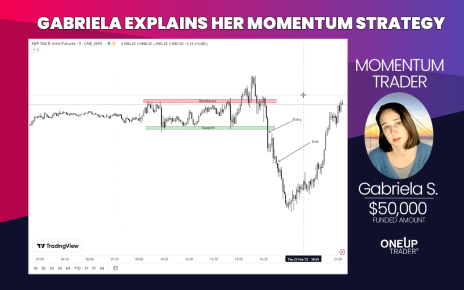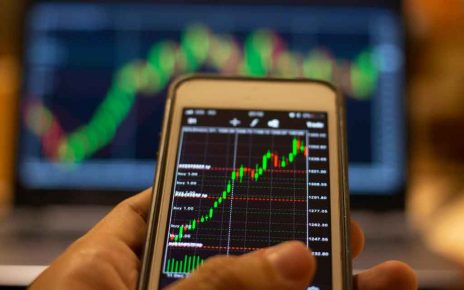It’s the roaring twenties again, and just like always, people are looking to make as much money as possible. These days, even with the advent of online trading, easy money and fast money remain a myth. If you want to make as much money as possible, trading might be a great career choice, but you’ll need to start somewhere.
One of the most popular starting points for a business like this is social trading. Also known as mirror trading and copy trading, it’s the crucial crutch in the learning curb of trading stocks, trading currencies, forex trading, and trading crypto – and it’s one of the best roads you can take if you want to become a Buffet-Esque trading broker.
In this article, we’ll talk a bit about social trading, the many problems that plague social traders daily, and provide some top-tier solutions.
Social trading is a form of trading where a platform allows you to copy what prominent investors and brokers are doing. If you are new to investments and trading, you’ll want to learn from the best, and copy trading is a practice that allows you to do just that.
Through mirror trading, you can mirror your trades to match those of experienced traders with proven track records and start working on your very own investment strategies while you’re at it.
It isn’t a long-term plan. After all, well-rounded investors, brokers, and traders mostly make their money through safe bets, and if that’s not your kind of thing, we completely understand.
However, trading itself is an art form, and learning trading from the masters allows you to have the right information and experience to make your moves.

Social trading isn’t only good because you can learn a lot from it – it’s good because you can make a decent chunk of money. Now, it’s important to note that not every social trading platform will ultimately wind up tripling your investment – experienced traders don’t stay ahead of the curve by making too risky decisions.
However, while you might not turn your penny into a million, by getting into social trading, you will:
- Learn a lot about trading by watching experts;
- Reduce your risk of losing money if you are new to trading;
- Gain the necessary information on specific trades;
- Get crucial insight into particular stocks, bonds, or currencies;
- Diversify your investment and trading strategies;
- Likely make a return on your investment;
- Get used to measuring and comparing trading performances.
Rome wasn’t built in a day, and neither will your trading career. Trading takes time, patience, and learning – but if you start your journey with social trading, chances are you’re on the right track to trading success.
Investor accounts lose money all the time, so you need to hope for the best and prepare for the worst. That being said, just because investor accounts lose money doesn’t mean your account has to lose money too – and that’s why you start your journey by mirror trading and learning from retail investor accounts. Not all retail traders are equally experienced, so you’ll need to find the right one to mirror.
Choosing the best out of the many social trading platforms is half the job if you want to start with social trading. A good platform will give you the right tools to learn what you’re doing and provide you with a selection of professionals you can learn from, further allowing you to curb the already high risk of losing.
Depending on your location, you’ll have different levels of access to social trading platforms. For example, some of the best social trading platforms don’t have the right contracts for differences (CFDs), which means that they can’t operate in the United States.
However, just because some trading platforms are available in the United States doesn’t mean they are available in all countries.
Choosing the best social trading platforms isn’t challenging as long as you know what to look for in one. A good social trading platform like OneUp Trader should have a range of trading professionals you can learn from, copy trading features, and as many stocks, bonds, currencies, and financial market options as possible.
CFDs are complex instruments that can either earn you much money or make you go broke in an instant. If you want to make money when trading CFDs, you need to learn all there is to know about risk management.
Furthermore, you’ll want to make sure that the platform offers a detailed portfolio breakdown. That allows you to gain insight into all the trades, a good trading risk indicator to show you what you’re getting into, and the overall diversification of the portfolio you want to start mirror trading.
No one wants to follow accounts that lose money, so a good platform should include a rating system to accompany every portfolio. A portfolio rating is especially important in copy trading because you’re learning.
A top social trading platform should have its own sites and social media accounts. All these platforms have their own sites and social media accounts – and social media allows you to connect with them in a familiar way. Furthermore, the residents of this social media platform make for some great traders to copy.

Perhaps the biggest challenge with social trading or any trading is that the book’s oldest rule applies.
“If you want to make any significant amount of money, you’ll need some cash to start with.”
Money attracts money, as long as you know how to stimulate it to do so using trading social platforms. Devising your own trading strategies isn’t easy, but it does pay off in the long run. If you’re social trading, you can learn from the best, but you’ll still need some resources.
Getting funds for trading used to be quite a demanding task. You either needed to have some savings to fall back onto, or you needed to take a bank loan – both of which were less than ideal options for copy trading transactions.
These days, there are ample funded trading programs around that can help you on your way to learning all there is to know about trading strategies through practices such as social trading.
What is a funded trading program?
If you’re wondering how to get funds for trading, applying for a funded trading program might be your best bet. A funding trading program is a service that will evaluate you and your trading talents/skills, and if you pass their trading evaluation, you’ll get full funding for your social trading platforms.
It makes opening an account easy, and as long as the account opening itself is simple, streamlined, and straightforward, chances are the rest of the platform is equally optimized.
A great funded trading program will offer a wide range of funding options with even more funding sources and funding networks for transactions. Furthermore, it will give you the resources you need to devise your very own profitable trading strategies.
Funding trading programs usually have a predetermined range of the best social trading platforms that they operate on and tools to help you get started on your social training platform journey.
The problems of being a lone trader

It’s not all sunshine and rainbows when it comes to lone trading in the social trading world. First and foremost, social trading is mostly oriented for beginners, and if you are one, you’ll have to pass the trial by fire. That doesn’t mean becoming a master at picking up trading signals – that’s what signal providers are for.
While there isn’t any secret-society ritual, there are some common things that almost all beginners need to persist through, the most prominent of which is the fear of accumulating debt from social trading loss. No trading strategy or tactic is fail-proof, and even with social trading, you might fail.
Sometimes, you can’t afford to take the risk. If you can’t afford to take the risk, you shouldn’t play the game, right? Wrong. If you can’t afford to take the risk, that only means you need to change your perspective on how you trade.
You’re putting your hard-earned cash at risk, and you probably aren’t too sure what you’re doing with it, but the risk is ultimately inevitable.
Losing your money is a very real threat in the trading world, but if you don’t want to wind up losing money rapidly due to poor trading choices – you need to invest in your trading tools, as well as your trading education.
After all, the risk is one of the things that makes copy trading so exciting. Copy trading is the stepping stone to actual trading, and learning to deal with risk is one of the most important things a startup investor can do. If you’re willing to take the high risk, you’re on the road to getting a high reward.
Never walk alone!
Most of the problems with being a lone trader in the social trading world are fear and uncertainty. Fear of blowing up your trading accounts, spending money on indicators, getting less than desirable results, and making the same mistakes over and over again are all normal parts of a trading investment journey.
Here’s some investment advice – you can’t do much without trading experience, and you can’t gain trading experience without losing some money.
While you might not know how to manage your trading risks, earn much money, or always make a trading investment that produces returns – you’ll have to persist through this. Persistence is the sole solution to most of the issues that modern-day beginner traders face daily.
If you are confident, persistent, and disciplined, the only problem you might face is loneliness. Investment isn’t simply a promising career, it’s a buzzing trading community of like-minded individuals, but with social trading, you might feel a bit less isolated.
Remember, no one wants to lose money when trading – but sometimes it’s inevitable.
You can lose money rapidly due to leverage, so why risk it?
If you want to start your journey into social trading off right, you’ll want to find a solid funded trading program that offers solid CFDs, such as OneUpTrader.
OneUpTrader has an impressive selection of funding options, helping solve most problems that social traders face daily.
It’s one of the most straightforward trading tools to use, offers a one-step evaluation, and allows you to open a trading account within minutes.
OneUpTrader supports over 20 of the best social trading platforms and even has some intricate platform-specific benefits that you can’t find elsewhere.
Unlike most platforms that come with a high data fee, OneUpTrader doesn’t have any monthly data fees for funded traders trading accounts, which is great if you’re starting your journey on copy trading platforms.
The flexible trading schedule allows you to learn all there is to know about trading and trade on your terms. Combined with the 15 mandatory online trading days a month, long permitted trading times, and an acceptable profit limit, OneUpTrader is definitely a powerful ally.
OneUpTrader also helps social traders with their journey into the online trading network with an active community and social networks, powerful real-time analysis tools, daily loss limits, and total transparency. All you need to do to fill your part of the bargain is be consistent, hit your goals, and learn as much as possible about the trading features and risk management, for example.
All in all, OneUpTrader is a provider you should consider. It’s easy to use, has many learning opportunities, reliable funding options, and the CFDs with this provider make it easy to make a lot of money.
Trading might be the most profitable career choice in this day and age – but it’s a harsh world to get into. If you play your cards right, sign up for a funded trading program like OneUp Trader – we’re sure you’ll master trading and investments and make a hefty ROI while you’re at it by being a mirror trader.





